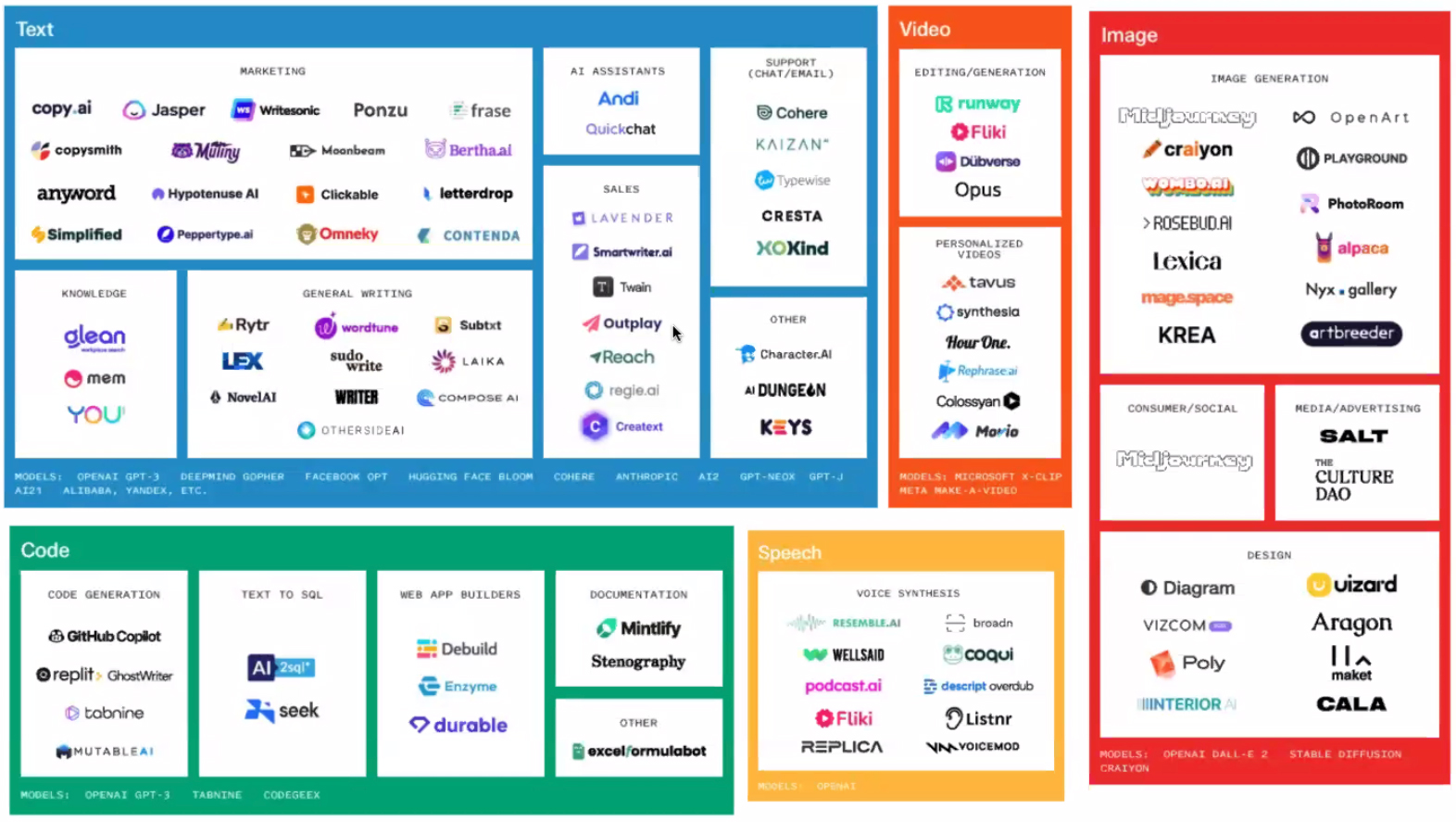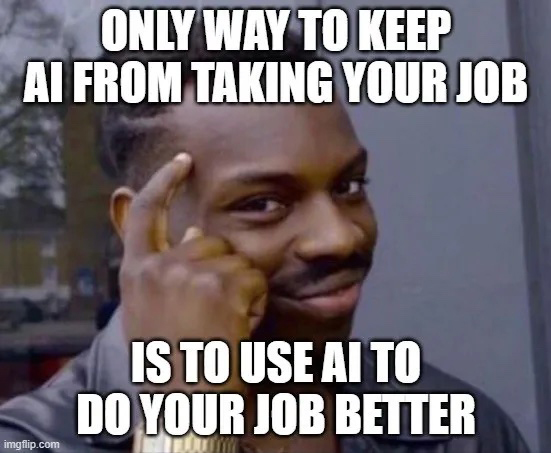
Mirren AI 2024: Conference Takeaways
Members of our team joined Mirren’s AI 2024 Conference this month to learn about the ever-evolving world of AI and how it impacts our business, our industry, and our clients. The conference brought together leading minds in artificial intelligence and advertising to explore how AI is revolutionizing the way we approach our work.
This is only the beginning of the AI explosion. Today marks the fewest AI tools we will ever have and the least advanced the available AI models will ever be. Every day is a new frontier.
At Method1, we are constantly evaluating how to leverage AI for the better. It’s a valuable tool that augments our talented team and provides inspiration every day for how we approach solving problems.
Not sure where to start or how to make sense of it all?
Check out our five takeaways below to learn how to apply AI to your business:
1. A One-Size-Fits-All AI Platform Doesn’t Exist
Generative AI (Gen AI) offers a vast array of tools and applications with the potential to transform workflows across various industries. However, navigating the diverse landscape of Gen AI options can be overwhelming. Look no further than this graphic from Jasper to help illustrate that point.

Rather than defaulting to one program or trying to understand them all, choose a few to have in your toolkit and learn the strengths (and weaknesses) of each.
You need to know what you’re asking for and how to direct models and engines in a way they can understand the context. Remember, the ideal Gen AI application is not just about the technology itself, but about how it integrates seamlessly with your existing workflows and empowers your team to achieve their goals.
We’ll be publishing more about how we use specific platforms in the weeks ahead. In the meantime, here is a brief guide to outline key considerations to help you determine the right Gen AI application for your specific needs.
-
Define Your Needs and Goals:
- Identify the specific task or problem you want Gen AI to address. What are your desired outcomes?
- Consider the type of content you need to generate or the task you want to automate. Is it text generation, image creation, data summarization, or something else?
-
Research and Evaluate Available Options:
- Explore different Gen AI applications and platforms relevant to your needs. Research their strengths, limitations, pricing, privacy, and user reviews.
- Consider factors like the application's user interface (UI), ease of use, and any required technical expertise.
-
Align with Your Data and Security Requirements:
- Assess the amount and type of data required by the Gen AI application. Ensure your data aligns with the application's purpose and privacy policies.
- Evaluate the platform's security measures and data protection practices. Choose an application with a strong track record of data security and user privacy.
-
Explore Free Trials and Demos:
- Many Gen AI platforms offer free trials or demo versions. Utilize these opportunities to test-drive the application and assess its suitability for your needs.
- Pay close attention to the quality and consistency of the generated outputs.
-
Consider the Human-AI Collaboration Factor:
- Remember that Gen AI is not a replacement for human expertise. It's a tool to augment human capabilities and enhance workflows.
- Choose an application that complements your existing processes and allows for human review and editing of its outputs.
2. Think of AI as a Powerful Assistant, Not a Replacement
We've all seen movies and read books about robots taking over the world, but are these fears justified?
While recent advancements in AI are impressive (and, yes, sometimes scary), the truth is these tools are far from the self-aware machines of science fiction. Leveraging generative AI into your workstream can unlock immediate efficiency gains and pave the way for long-term benefits, empowering your team and driving positive business outcomes.

Generative AI can jumpstart your creative process and save you time. It can help you:
- Brainstorm fresh topic ideas: Overcome writer's block and generate new content ideas quickly.
- Draft content faster: Get a head start on writing with AI-assisted draft creation.
- Create unique visuals: Generate images and graphics to complement your content.
- Automate repetitive tasks: Free up your time by having AI handle routine reports and document creation.
- Gain valuable insights from your competitors: Use it to get concise summaries of competitors' annual reports, product announcements, and public statements. It can also help identify key themes by uncovering recurring patterns and trends in your competitors' activities
While AI can't replace strategic analysis, it can kickstart your research, allowing you to ramp up more quickly and focus on deeper analysis and informed decision-making. The human touch remains crucial, and human review is essential to ensure content is clear, concise, and aligns with your brand identity. This combined approach maximizes efficiency while maintaining the quality and consistency expected by your team.
3. Your Company Needs a Formal Stance on AI
One important step that marketers often overlook as they seek to implement AI at their companies is the publication of a company-wide AI policy. A well-structured AI policy sets clear guidelines and guardrails that will protect your client’s data, mitigate your legal risk, and help to enable the responsible adoption of AI across your organization. With regulators like the FTC and NIST starting to pay more attention to how businesses are using AI, having your own policy in place is essential for making sure your company is protected and ahead of the curve.
Key Highlights For Establishing an AI Policy
- Appoint an AI Leader: Make sure it's clear who's responsible for overseeing the company’s AI projects and initiatives. This person (or people) will be responsible for making sure that any AI applications being used at the company meet the company’s standards for data security, legal compliance, ethics, etc.
- Set the Pace for AI Adoption: Don’t rush into using AI everywhere all at once. When testing new AI tools, start small, monitor the results, and then standardize what’s working. A measured, calculated approach limits your organizational risk when applying new tools, especially when it comes to sensitive material like customer data and copyright issues
- Establish an Approved AI Tool list: Be clear about which AI tools are approved for company use. Most widely-known AI tools keep their data security packages behind a paywall, so it’s important to make sure your team is only using versions that have been vetted as meeting the company’s data security standards.
- Lay Out Ethical AI Guidelines: Your AI policy should also include ethical considerations around how AI is used at your company. This category includes things like disclosing when/how AI is being used, acknowledging the biases inherent in the technology, and protecting the privacy of our clients and their customers.
The AI landscape is constantly changing, so it’s important to revisit your company’s AI policy regularly to ensure you’re staying up to date with the latest best practices. Not sure where to begin? Reach out to us, and we’ll share a copy of ours!
4. Don’t Panic – You’re Not Behind Yet (but you will be if you don’t start now)
To get started on your AI journey, Reliable Group CEO Veeral Lakhani recommends deploying a strategy called FAFO (Fu*k Around and Find Out). While FAFO’s meaning has evolved in popular culture recently as a popular slang term on TikTok, it’s had a very different meaning in the software community for much longer, and it serves as a useful call to action for those that have been slow to experiment with AI. Essentially, FAFO means to just go ahead and start experimenting. It’s the fastest way you will truly understand what AI can do.
This reminds us of another acronym “VUCA” coined at the Department of Defense in the 1960s meaning Volatile, Uncertain, Complex, Ambiguous. This characterizes the AI world we now live in, and can lead to lack of effective action.
As Mark Divine of SealFit and Unbeatable Mind puts it: “As leaders we need to learn how to navigate and lead in a VUCA world, to become “VUCA leaders.” Continuing to rely on the same strategies and tactics that worked in the past will yield poor results, further increasing personal and organizational stress. According to Sean Esbjörn-Hargens of MetaIntegral Associates, Inc, this is called “The Complexity Gap.” To overcome the complexity gap, leaders must prioritize both horizontal learning (decision-making, communication, planning, and execution) as well as vertical learning (developing one’s consciousness and evolving the mindset that knows the horizontal skills).
In other words, horizontal learning gives us a bigger toolbox and vertical learning gives us a wider range of vision from which to see how we might make use of those tools.
Embracing a FAFO mindset when it comes to AI can help drive both vertical and horizontal learning to help us close the complexity gap and lead our teams toward meaningful innovation.
5. AI Adoption Starts at the Top
Building an AI mindset at your company starts at the top. AI provides the opportunity for companies to reimagine how they do business. Successful leaders will know how to leverage AI for themselves, their teams, and their organizations.
Ask yourself: Are our company's executives using AI every week?
If they're not, it's time to change that. Flexing the AI muscle is essential for adoption (FAFO!). If the leadership team isn't making AI a priority, chances are the rest of the company isn’t either. Accenture ran a study in which over 65% of executives surveyed admitted they lacked the technological expertise required for gen AI-led transformation. Leadership must be open to leading and operating differently in the future, and the leadership team having a baseline understanding of AI and its implications/applications will be critical to ensuring an organization can navigate the changes stemming from AI as they inevitably arise.
So where do you get started? Make AI use a policy.
Reliable Group began operationalizing AI across the organization by requiring all executives to use AI at least once a week — and tracking it. Once leadership was consistently applying AI to their day-to-day operations, they began requiring employees to use it as well.
At Method1, we formed an AI Task Force and have conducted company-wide training on AI and its usage. Starting in Q2, we are building AI use metrics into our quarterly goals. By developing a better understanding of the landscape, we are all better equipped to identify gaps and opportunities for AI's usage in the market that can transform the way we do business.
Leaders are learning just like everybody else is learning. It’s easy to underestimate the foundation needed to really make gen AI successful. It’s so much more than layering this on top and thinking, ‘If you build it, they will come.’ From a technology standpoint and a change standpoint, being people-led and tech-powered comes with a learning curve for leaders to make sure the outputs are really what you want. To get buy-in from your full workforce, we need to see leaders leading the way and engaging with these new tools more than anyone.
Donna Morris, Chief People Officer, Walmart
Source: Accenture State of AI Report
This is the first part in a longer series of AI posts we’ll be publishing in the months ahead. Got a topic you’d like us to explore in a future post? Send us a note!
Ready to
make your brand
irresistible?
